Your aquarium’s cycling beautifully. You’ve dabbled with soft corals and large polyp stony (LPS) corals. Now you want a challenge (Go you).
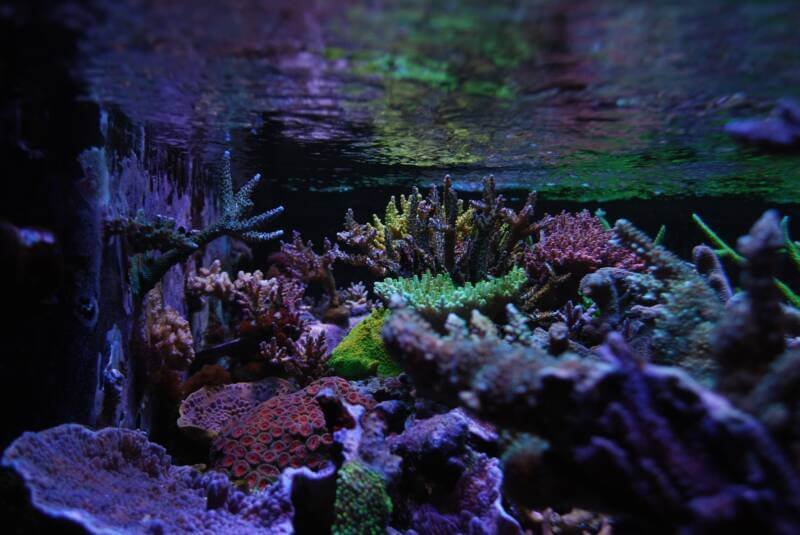
You’re ready to tackle soft polyp stony (SPS) corals. Where to start, though?
In this article
Tank Prep for SPS Corals
SPS corals don’t present challenges for nothing. These little reef-builders HATE change.
As such, before you introduce an SPS species to your tank, make sure conditions are optimal and stable (fluctuations and SPS corals don’t mix).
What do those conditions look like? Something like this:
| Parameter | Value |
| Salinity | 1.020-1.028 (35-37ppt) |
| Temperature | 77-80F (25-26.7C) |
| pH | 8.2-8.4 |
| Alkalinity | 8.2Dkh |
| Alkalinity: Growth | 12Dkh |
| Calcium: Color | 430ppm |
| Calcium: Growth | 465ppm |
| Magnesium: Color | 1310ppm |
| Magnesium: Growth | 1390ppm |
| Nitrates | <5ppm |
| Phosphates | < 0.03ppm |
Additional Tank Concerns for SPS Corals
SPS corals are DIFFICULT. They demand the best water quality, which must stay free from contaminants.
That means a lot of time and investment on your part. If you want the challenge of maintaining SPS corals, have the following equipment on-hand.
- A quality RO/DI system to preserve water quality
- Auto Top-Off to account for water evaporation
- Protein skimmers to remove leftover food and add oxygen
Lighting your SPS Corals
Low light conditions result in SPS corals going tan or “browning out.” Soft corals don’t mind lower lights, but now that you’re embracing SPS corals, it’s time for a lighting upgrade.
Your three best options:
- Metal Halide: Metal halide provides a stunning shine to the water, mimicking natural light for your SPS corals.
- T5: SPS corals LOVE T5 lights. The bulbs provide quality lighting to ensure your corals stay happy and healthy. Unhappily, you’ll have to change the bulbs out frequently.
- LED: LEDs provide a compromise between lighting and budget. You select the intensity and spectrum, and the bulb lasts, even with constant use.
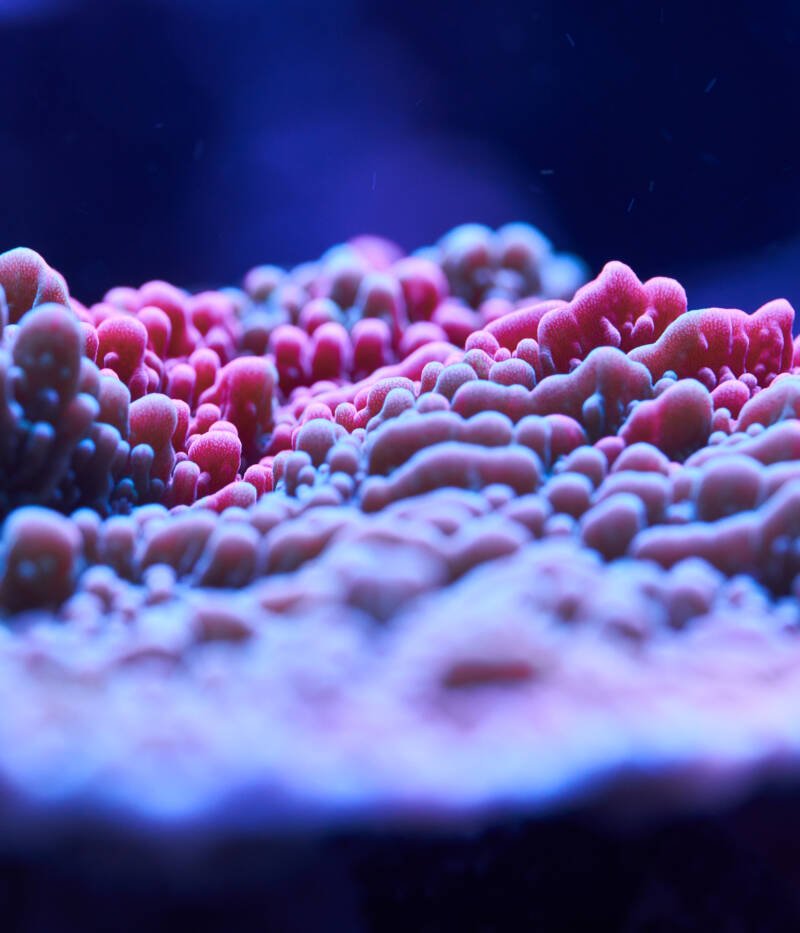
SPS Corals: Beginner’s Overview
SPS corals are the reef-builders of the ocean.
The tiny polyps remain within a living “skin” of tissue. They lay down calcium carbonate skeletons as they grow, relying heavily on sunlight for energy. (Which is why your lighting is so important)
While the skeleton gets built to handle strong water currents, it’s easily broken. However, healthy living tissue continues to grow. Fragging healthy portions provide the resources for your tank (in case you wondered where your new aquarium inhabitants came from).
Common SPS corals include:
- Acropora spp.: Staghorn coral, Table coral, Cluster coral, Bottlebrush coral
- Hydnophora spp.: Horn coral
- Montipora spp.: Velvet coral
- Pocillopora spp.: Cauliflower coral, Brush coral, Cluster coral
- Porites spp.: Finger coral
- Seriatopora spp.: Bird’s nest coral
- Stylopora spp.: Club finger coral
7 Best SPS Corals for Beginners
Okay, you have your equipment primed, and your tank’s conditions are stable. Time to select your SPS corals.
SPS corals come in a variety of colors and shapes – from branching to flat and everything in between. Every coral’s unique, and each has specific requirements.
1. Green Bali Slimer (Acropora yongei)
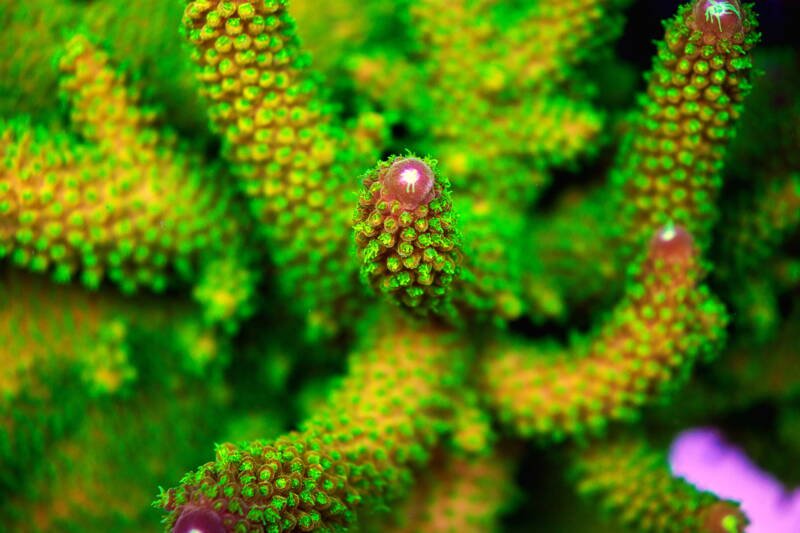
Green Bali slimers are (you’ll never guess) GREEN. However, the shade varies depending on your lighting. You’ll find every variation from dark green to neon. This SPS coral sports wide branches, common in the Acropora genus.
Slimers grow fast once established, so make sure you provide plenty of room in your tank. As the name suggests, they also produce a slime-like substance when disturbed.
Make sure you handle the corals as little as possible. (Your fish will learn on their own)
2. Chalice Coral (Echinophyllia spp.)
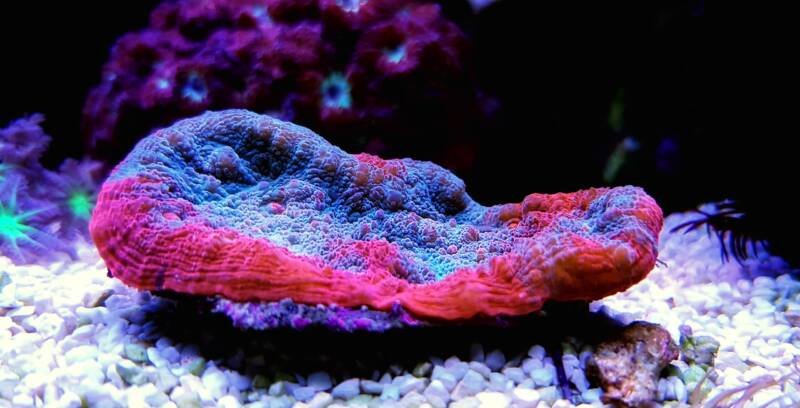
They are the easiest SPS coral to manage from the Lobophyllidae family.
Exceptionally hardy, they adapt by encrusting on any sturdy surface. Available in a variety of colors, the oral discs have a different color than the remainder of the body. They form low cups and folds.
Chalice corals ARE aggressive. With sweeper tentacles up to a FOOT (30cm) in length, they’ll attack any corals within reach.
Think carefully about placement if you add them to your tank (unless you hate your other corals). Otherwise, they do well with high-quality water.
3. Velvet Coral (Montipora spp.)
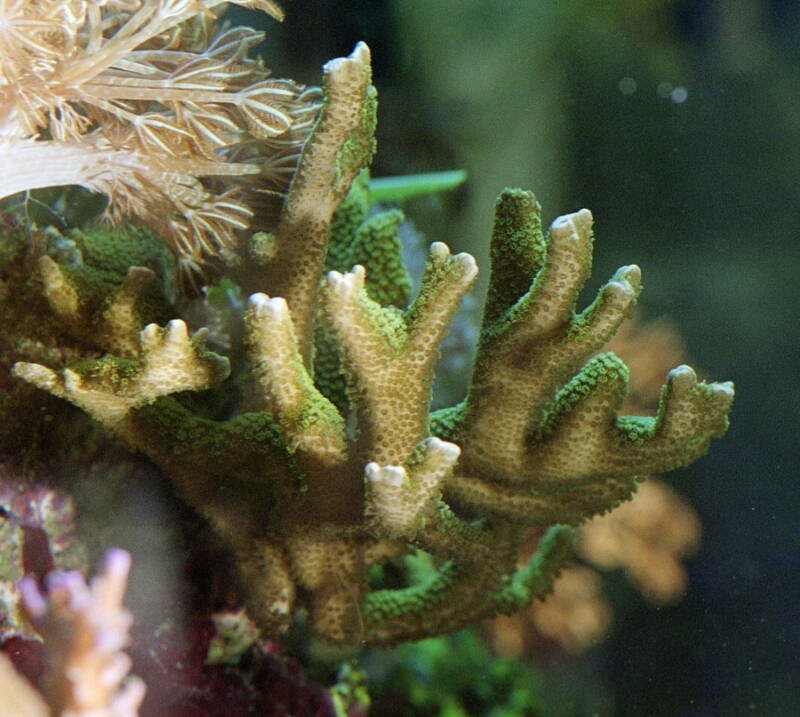
Montiporas rank at the top of the list when it comes to “easy” SPS corals.
With over 200 species, you’re spoiled for choice in both color and shape. The polyps are so small, these corals appear “fuzzy,” which is where they get the name Velvet corals.
Unlike some SPS corals, Montiporas are submissive. So you still need to consider placement carefully, but this time it’s to keep your Montiporas safe from potential chemical warfare from other tank residents. Otherwise, just keep up with your calcium levels, and they’ll stay happy.
4. Leaf Coral (Pavona decussata)

Leaf corals develop a ruffled appearance with flat, upright fronds. The surface is also marked with pointed tentacles, similar to a cactus.
They’re available in numerous colors, providing an impressive variety for your aquarium.
Hardy little SPS corals, Leaf corals develop corallites that make them particularly resistant to disease. This resistance makes them an excellent choice for beginners (you know, just in case).
They require high light levels, though, and they prefer a strong water current.
5. Boulder Coral (Porites spp.)
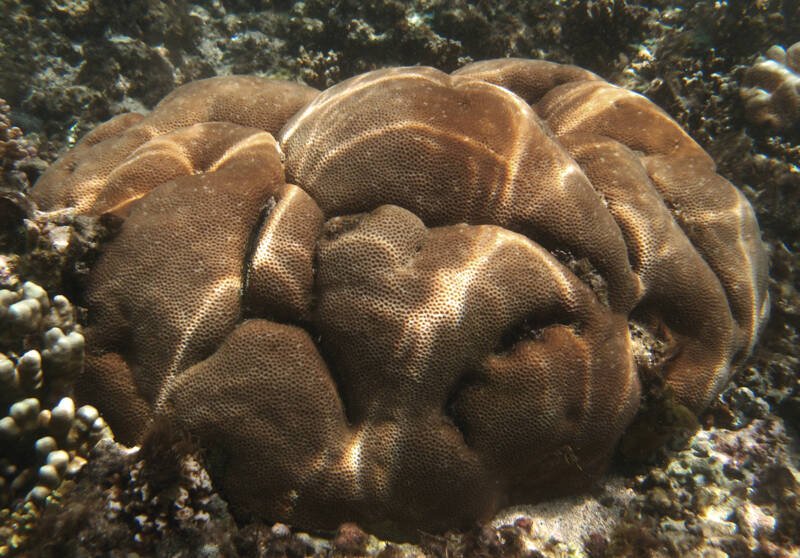
Out in the ocean, divers and scientists stumble on Boulder corals in the range of 1000 years old! While your Boulder coral won’t reach that age (in your lifetime), expect the same slow growth.
These encrusting corals come in vivid colors, brought out under high-intensity lighting.
Boulder corals combine the best traits: non-aggressive, hardy, and capable of regrowth. Even if attacked, these SPS corals grow and re-calcify dead portions of their skeleton. You should still consider proper placement for optimum health, though.
6. Bird’s Nest Coral (Seriatopora hystrix)
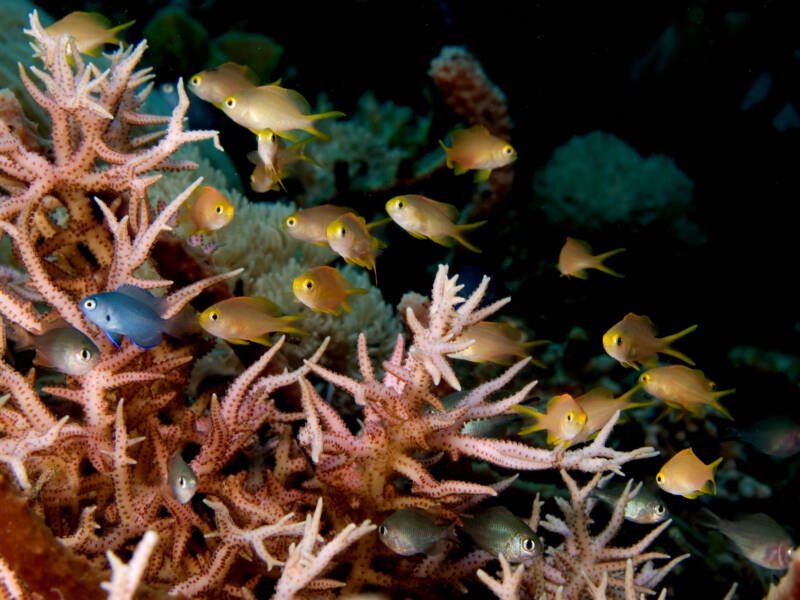
Bird’s Nest corals are popular with beginners for their appearance, their low cost, and their ease of care.
In the wild, Coral gall crabs form a symbiotic relationship with this SPS coral, taking advantage of the thick branches (the stronger the current, the thicker the branch).
Bird’s Nest corals grow rapidly, and their aggressive nature puts the remainder of your tank at risk for a takeover. The branches form both needle-points and blunt tips; both are fragile and prone to breakage.
However, this SPS coral regrows with little trouble.
7. Club Finger Coral (Stylophora pistillata)
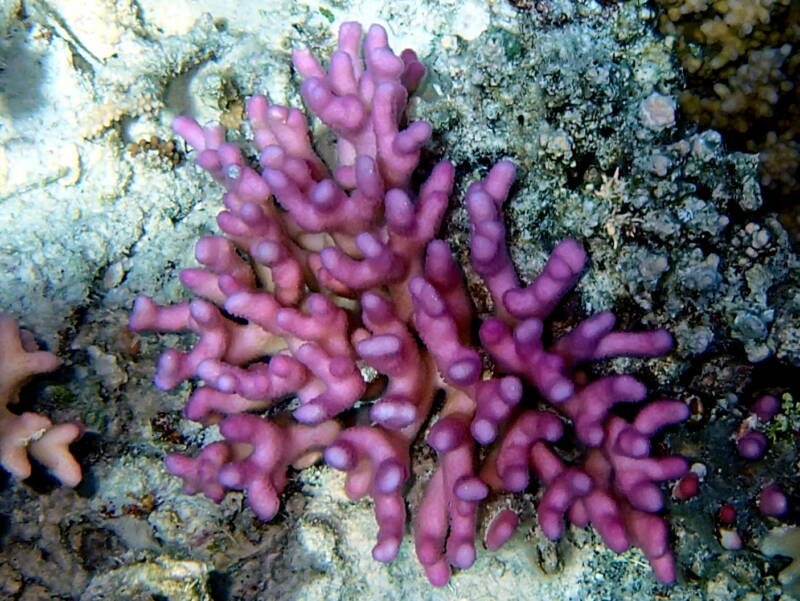
The Stylophora genus is well-studied in biological circles. Club Finger corals form branching colonies of various colors, the branches themselves thick with rounded tips.
This particular SPS coral reproduces sexually (not that you’re likely to see the process in your tank – just a fun fact).
If you don’t want a hostile takeover of your tank, make sure you provide your Club Finger corals with plenty of room to grow. Beginners flock to most of the available Stylophora as they’re adaptable and easy to care for.
SPS Corals and Beginners
SPS corals are daunting for even experienced aquarists. Most of the common ailments (bleaching, closed polyps, and pale coloration) result from poor tank conditions.
With such narrow margins for error, you need to stay on top of water quality testing.
However, if you’re willing to invest blood, sweat, and tears (okay, maybe not blood), the results are a staggeringly beautiful aquarium. You’ll appreciate every moment of time and effort.
Have a favorite SPS coral? Want to commiserate a story of SPS beginner woes? Share your story here!